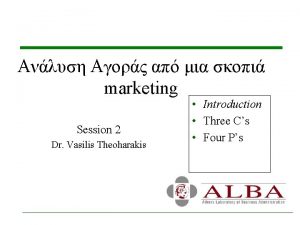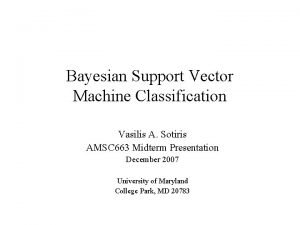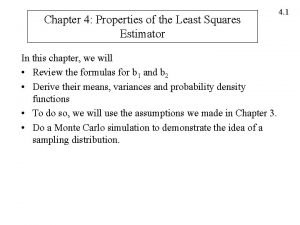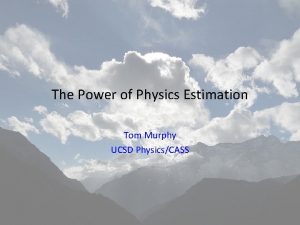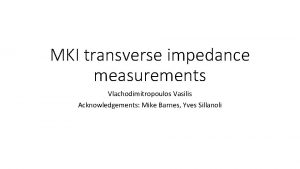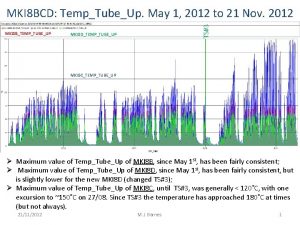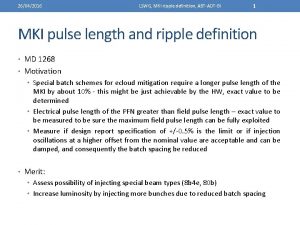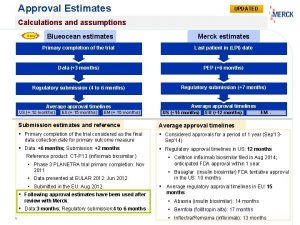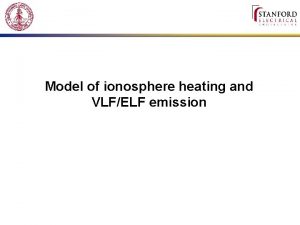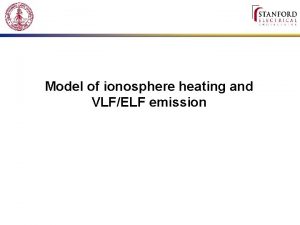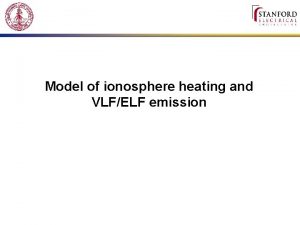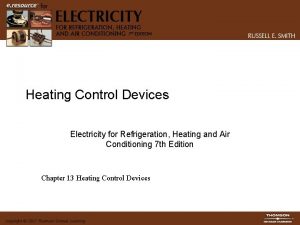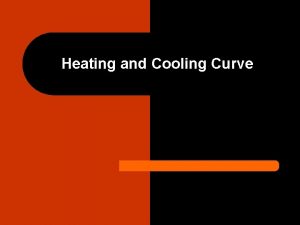Status and procedures for MKI heating estimates Vasilis
















- Slides: 16

Status and procedures for MKI heating estimates Vasilis Vlachodimitropoulos Acknowledgements: M. Barnes, H. Day, L. Vega Cid

MKI’s role Circulating Beam • Take beam from SPS and put in a stable orbit of LHC Injected Beam SPS LHC Courtesy: Mike Courtesy: Lorena

MKI in short • MKI is a transmission line kicker magnet – To meet rise time requirements • It consists of 33 blocks – Capacitors + Ferrite Yoke

Beam Screen • Screen design: 24 conductive wires on a ceramic tube • To keep rise time low: wires are capacitively coupled (cc) to the ground in one end and grounded only in the other

Beam Impedance issues • Part of the TEM beam field couples to the cylinder-wires cavity • The wave propagates in the cavity and gets radiated at the ends • The emitted power reaches the ferrite yoke and heats it up • Power is distributed non-uniformly: Upstream blocks are affected more

What we want • Keep the yoke below its Tc • Accurate impedance model of the MKI (CST and measurements) • Power loss distribution (CST+Matlab)

Our approach – in math • What we expect • What we estimate • So we approximate

Our approach – in words • CST does not provide a time power loss monitor for dispersive material • Place CST power loss monitors at resonant frequencies of Real Longitudinal Impedance • Integrate power loss density over transverse planes → Longitudinal power distribution at each frequency • Normalize each distribution to unit total power loss per frequency; to ignore normalizations from CST • Scale each distribution by a factor proportional to the power loss at the same frequency • Sum the distributions and normalize the final distribution to unity • Scale the total distribution with the total expected power loss

The results Courtesy: Hugo

Model Validation 1 2 1. Magnet_Up (Ferrite yoke#3) 2. Upstream Ferrite Rings PT 100 measured 49°C 87°C ANSYS calculations 46. 7°C 93°C Courtesy: Lorena 180 160 100 93 90 140 120 80 100 80 70 68 60 40 20 0 62 53 51 60 57 48. 8 53 50. 6 43 48. 6 41. 6 50 47 40. 6 40 Ferrite rings Ferrite yoke#1 Ferrite yoke#2 Ferrite yoke#3 Ferrite yoke#4 Ferrite yoke#5 Ferrite yoke#6 Ferrite yoke#7 46. 7 44. 7 Temperature (°C) Power deposition (W/m) 200 Power deposition at 60% Maximum Run 2 (W/m) Side plate temperature Maximum Ferrite temperature

Run 2 & HL predictions • Run 2: all simulated blocks below Tc • HL-LHC: all seven blocks above Tc Courtesy: Lorena

Discrepancies with previous predictions pre. LS 1 post. LS 1 HL-LHC 25 ns HL-LHC 50 ns CR 01_T 05 28/14 45/25. 5 167/93. 5 206/116. 1 CR 02_T 10 30/15. 2 48/27. 2 177/99. 6 218/124 CR 03_T 01 25/14. 5 39/23. 5 145/85. 85 179/106 CR 05_T 02 21/11. 2 36/19. 6 130/71. 8 160/90 CR 07_T 08 27/14. 6 45/24. 8 163/91 199/113. 4 CR 08_T 11 26/14. 6 43/24. 9 158/91. 2 192/112. 8 CR 09_T 03 26/13. 8 44 /24. 8 162/90. 8 198/112. 9 CR 10_T 06 25/13. 3 41/23. 3 150/85. 5 184/106. 22 CR 11_T 13 35/24. 7 52/38. 2 191/139. 8 240/172. 66 CR 12_T 12 20/12. 7 34/21. 7 125/79. 5 151/98. 44 Table: Estimated power loss per magnet, with measured impedance data obtained using the resonant method

Impedance – Total Power Loss pre. LS 1 post. LS 1 HL-LHC 25 ns HL-LHC 50 ns coarse 29. 7 56. 7 207. 7 196. 3 fine 1 28. 1 34. 5 126. 2 185. 85 fine 2 30. 2 37. 8 138. 5 199. 3 fine 3 33. 4 43. 3 158. 5 231. 3 Table: Power loss estimates from impedance data of different meshes of the MKI model

Solutions we look into • Shorter overlap b/w cylinder and wires → Impedance peaks are upshifted where the beam is less energetic → Lower total loss • Greater exposure of the radiated field to damping materials i. Additional ferritic collar (Hugo) ii. Optimization of current configuration of existing ferrite rings iii. Window openings in the metallic cylinder

Summary • Main goal: keep ferrite yoke below Tc • Estimate the distribution of power deposition in the MKI • CST+Matlab → normalized distribution • CST/measurements → total power loss • Current estimations suggest MKI will be a major issue for HL-LHC • Tool validation – Any feedback is more than welcome! • Test proposed solutions

Thank you for your attention!
 Dielectric heating
Dielectric heating Microsoft research nyc
Microsoft research nyc Vasilis theoharakis
Vasilis theoharakis Syrgkanis
Syrgkanis Vasilis sotiris
Vasilis sotiris Who global estimates on prevalence of hearing loss 2020
Who global estimates on prevalence of hearing loss 2020 Who global estimates on prevalence of hearing loss 2020
Who global estimates on prevalence of hearing loss 2020 Eva estimates that 475 songs
Eva estimates that 475 songs Properties of least square regression line
Properties of least square regression line Dcms economic estimates
Dcms economic estimates Building maintenance cost estimates
Building maintenance cost estimates Job order costing
Job order costing Fermi estimation
Fermi estimation The fermi problem
The fermi problem The account analysis method estimates cost functions
The account analysis method estimates cost functions Marquis company estimates that annual manufacturing
Marquis company estimates that annual manufacturing Kontinuitetshantering
Kontinuitetshantering


